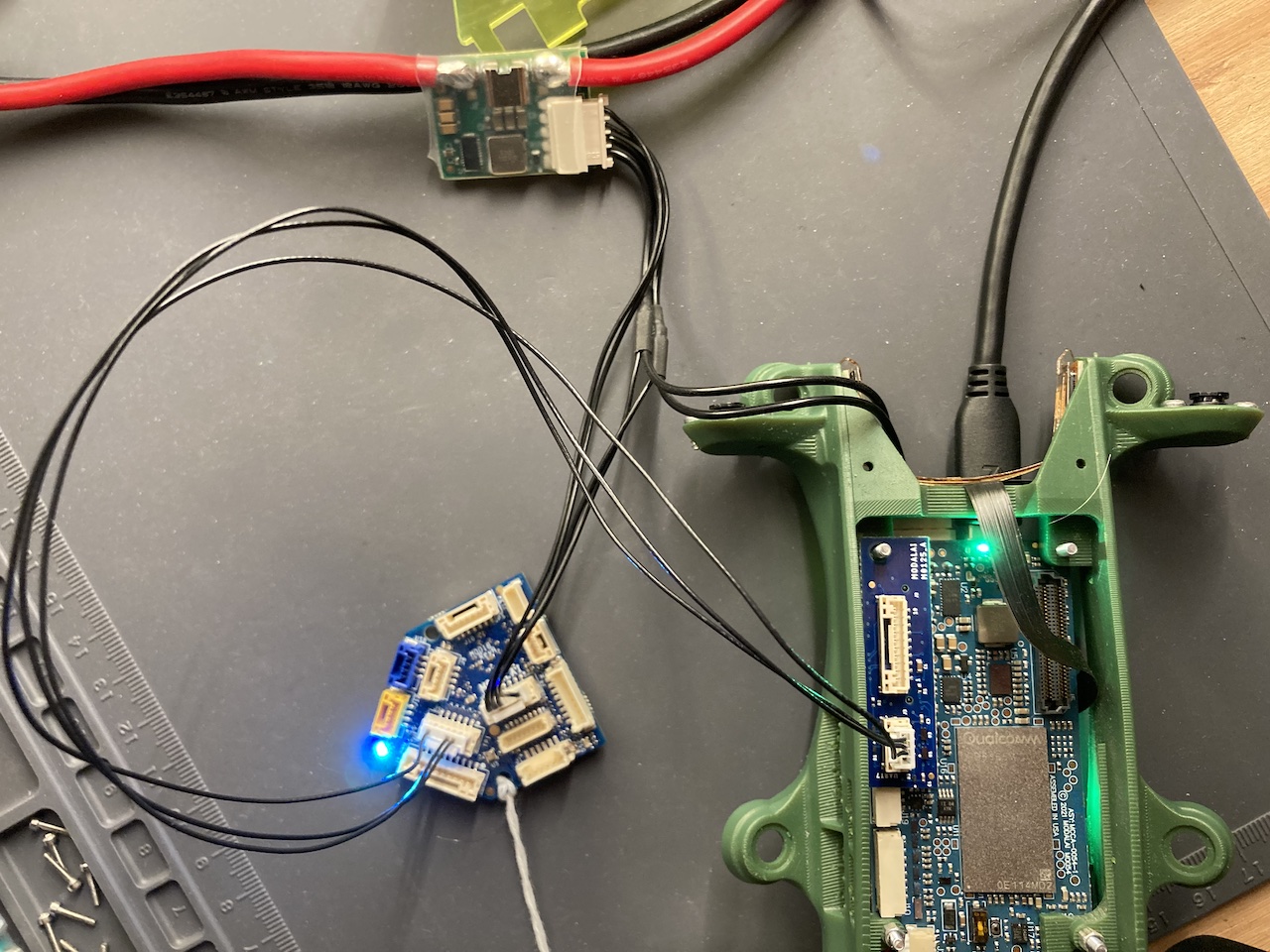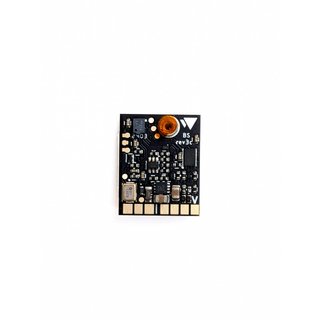Why Choose SparkNavi Drone Flight Controller and GNSS/INS Made in Taiwan for Advanced Navigating
Why Choose SparkNavi Drone Flight Controller and GNSS/INS Made in Taiwan for Advanced Navigating
Blog Article
The Importance of Drone Trip Controllers in Modern Aerial Technology: Trick Elements and Their Effect
In the realm of modern-day aerial modern technology, drone trip controllers function as the pivotal systems that coordinate a drone's efficiency and capabilities. These sophisticated devices incorporate important components such as microcontrollers and GPS components, promoting stability and accuracy in trip operations. Their duty is specifically obvious in self-governing features, where innovative formulas enhance navigating and obstacle avoidance. As industries significantly rely upon drones for applications ranging from agriculture to surveillance, the evolving modern technology within trip controllers elevates critical concerns regarding their future influence and potential innovations. What innovations lie ahead that could redefine our understanding of drone abilities?

Introduction of Drone Trip Controllers
In the world of airborne technology, drone flight controllers act as the critical mind of unmanned aerial automobiles (UAVs), enabling specific maneuverability and security throughout flight. These innovative systems integrate sensing unit information, processing algorithms, and control inputs, allowing drones to perform complicated trip patterns with accuracy.
Drone flight controllers use different sensors, such as gyroscopes, accelerometers, and GPS modules, to analyze the UAV's alignment and placement in real-time. This details is necessary for preserving equilibrium and making sure secure operation in varied ecological problems. The controllers process this information to make instantaneous adjustments to the drone's motors, permitting smooth shifts and responsive handling.
Additionally, trip controllers are outfitted with sophisticated software application that supports functions such as waypoint navigating, obstacle avoidance, and self-governing flight capabilities. This software application is essential for both industrial and leisure applications, where integrity and precision are vital. As drone innovation remains to breakthrough, the advancement of trip controllers will play a critical function in enhancing UAV safety, convenience, and capability, ultimately broadening their applications throughout numerous industries.
Key Elements Explained
Understanding the essential components of drone trip controllers is vital for grasping exactly how these systems operate effectively. At the heart of a flight controller is the microcontroller, which works as the mind, refining information from numerous sensing units and performing commands. Necessary sensors include gyroscopes and accelerometers, which gauge the drone's positioning and activity, providing essential feedback for stabilization.
An additional trick element is the barometer, which evaluates altitude by determining climatic stress, while GPS components offer positional data, enabling self-governing navigation - SparkNavi drone flight controller and GNSS/INS made in taiwan. The flight controller likewise interfaces with Digital Rate Controllers (ESCs), which control the speed of the drone's electric motors based on the controller's commands
Interaction modules, such as radio receivers, facilitate push-button control input, enabling operators to send commands in real-time. Additionally, some trip controllers incorporate software program that can handle complex algorithms for waypoint navigation, flight preparation, and telemetry data evaluation.
Role in Trip Security
Central to preserving trip stability, drone flight controllers make use of innovative algorithms to refine sensor data and make real-time modifications. These controllers are outfitted with a variety of sensing units, consisting of accelerometers, gyroscopes, and measures, which continually check the drone's rate, alignment, and elevation. visit our website By interpreting this data, the flight controller can recognize inconsistencies from the preferred trip course and respond promptly to maintain security.
For example, if a drone experiences an unanticipated gust of wind, the flight controller can rapidly readjust the motor rates to counteract the disruption, ensuring a constant flight trajectory. This ability is essential not only for manual flight operations however also for performing complicated maneuvers and keeping smooth flight in various environmental problems.
.jpg)
Moreover, the advanced formulas used in flight controllers, such as PID (Proportional-Integral-Derivative) control, permit fine-tuning of the drone's feedback to adjustments in trip conditions. By maximizing these control specifications, flight controllers can improve stability, boost responsiveness, and lower pilot workload. Inevitably, the duty of flight controllers in making sure flight stability is crucial for the effective and safe operation of contemporary drones across varied applications.
Influence on Autonomous Procedures

Independent operations are especially important in diverse applications such as surveillance, farming, and shipment solutions. With improved flight controllers, drones can autonomously navigate fixed courses, successfully gather data, see this and adjust to dynamic settings. This ability decreases the demand for constant human oversight, thus enhancing operational performance and safety.
Additionally, the implementation of artificial intelligence strategies within trip controllers enables drones to enhance their performance over time by gaining from previous missions. This flexibility leads the method for a lot more sophisticated independent applications, such as flock modern technology, where multiple drones collaborate their activities to attain an usual purpose.
Future Trends in Trip Controllers
Innovations in trip controller technology are poised to revolutionize drone capabilities in the coming years. One considerable fad is the integration of synthetic knowledge (AI) and equipment knowing formulas, allowing drones to gain from their atmospheres and make real-time choices. This development will certainly enhance independent navigation, challenge evasion, and goal preparation, dramatically improving operational efficiency and security.
Furthermore, the growth of advanced sensor modern technologies, such as LiDAR and multispectral imaging, will certainly give flight controllers with richer data inputs. This will certainly facilitate much more innovative analytical capacities, enabling drones to conduct intricate jobs, such as precision search, farming and rescue, and framework evaluations with unmatched accuracy.
Another arising fad is the miniaturization of trip controller components, which will certainly lead to lighter and more compact drones. This advancement will expand trip durations and payload abilities, making drones much more versatile for different applications.
Conclusion
Finally, drone flight controllers serve as important elements in modern-day airborne innovation, making certain stability and precision in ability to move through the assimilation of microcontrollers, accelerometers, and GPS components. SparkNavi drone flight controller the original source and GNSS/INS made in taiwan. Their capability to make it possible for autonomous procedures and adjust to different applications highlights their importance throughout numerous industries. As developments in synthetic knowledge and sensing unit innovation proceed to emerge, the possibility for enhanced abilities and boosted functional effectiveness in drone systems will likely reshape the future of airborne applications
Central to maintaining flight stability, drone trip controllers utilize sophisticated formulas to process sensing unit information and make real-time modifications. By translating this data, the trip controller can recognize inconsistencies from the desired flight path and respond immediately to maintain stability.
Moreover, the sophisticated formulas used in trip controllers, such as PID (Proportional-Integral-Derivative) control, enable for fine-tuning of the drone's action to adjustments in flight conditions. Eventually, the role of trip controllers in making certain flight stability is essential for the risk-free and reliable procedure of modern drones throughout varied applications.
The advancements in drone trip controllers not only enhance flight stability but likewise substantially influence self-governing operations. SparkNavi drone flight controller and GNSS/INS made in taiwan.
Report this page